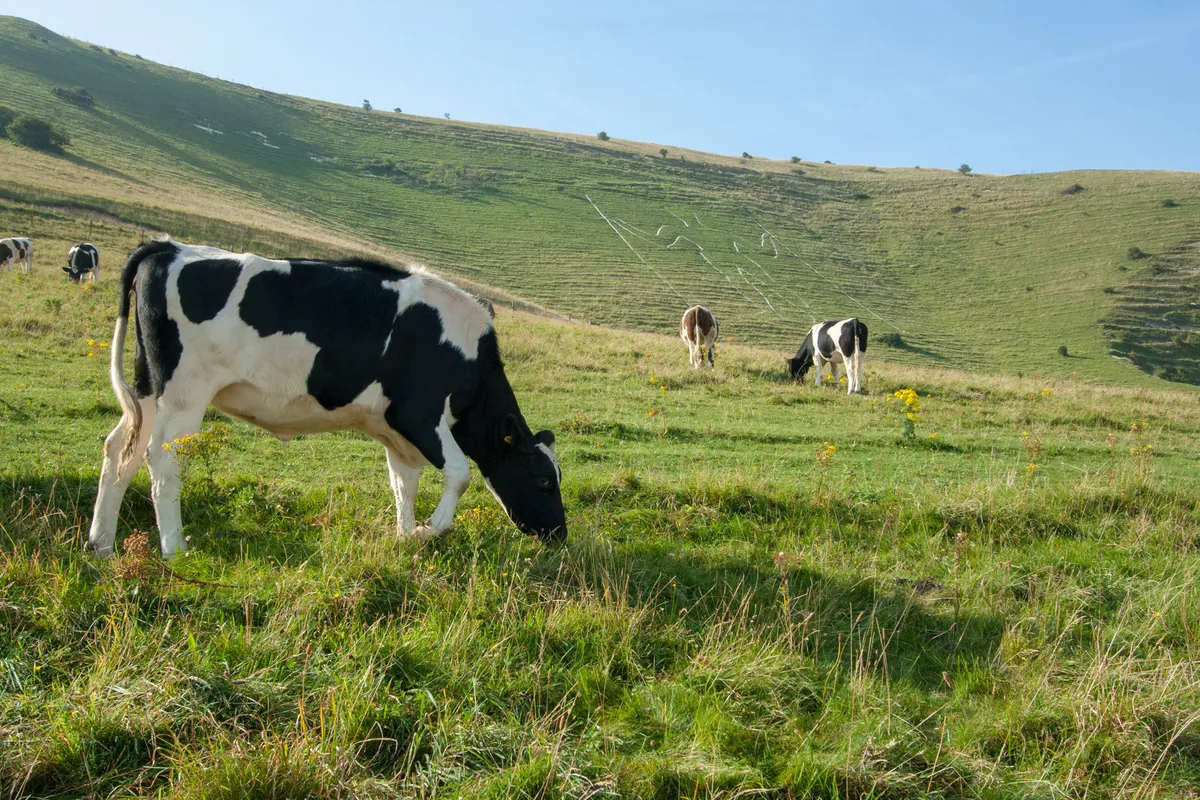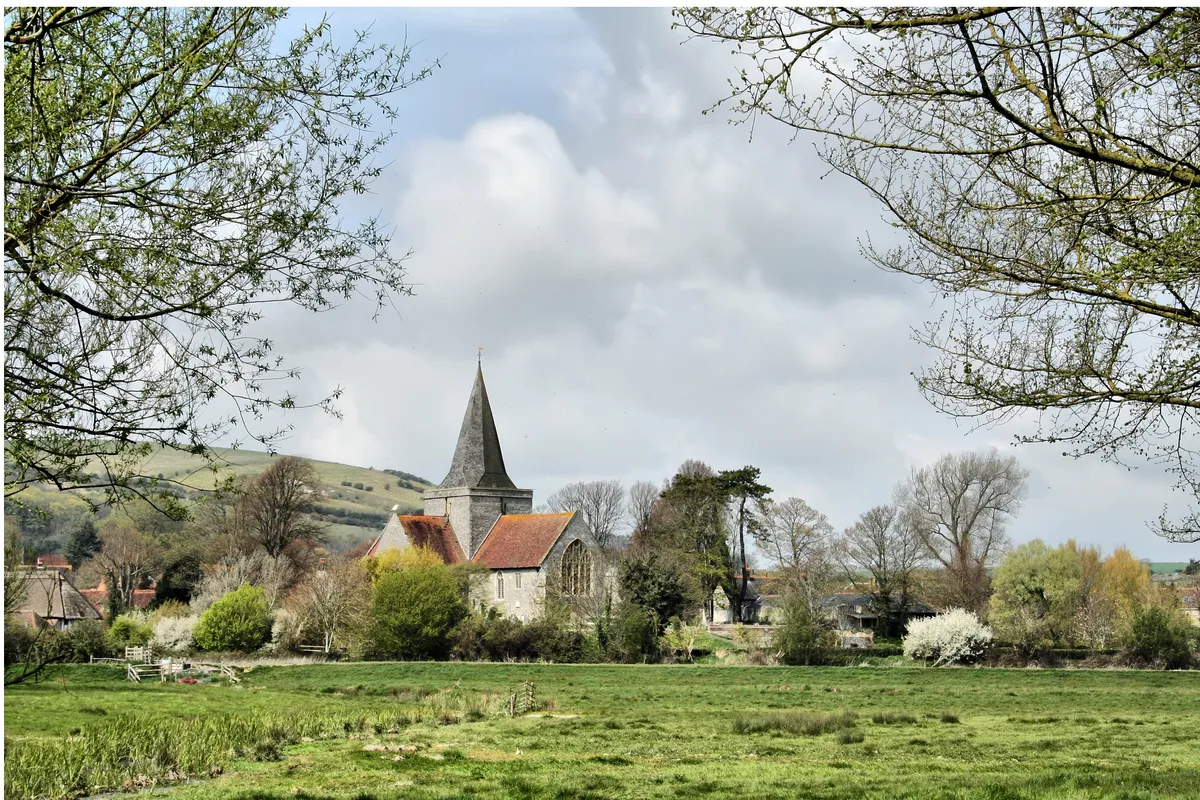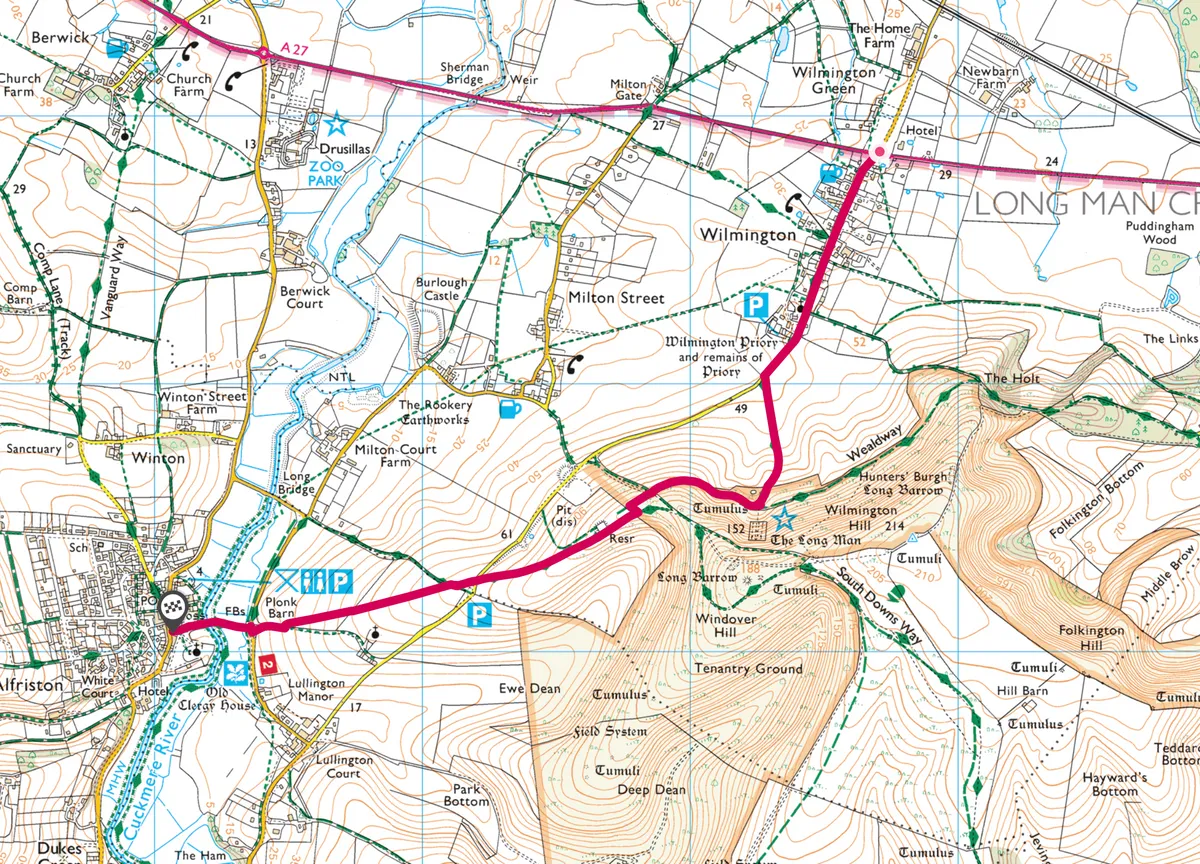The Long Man of Wilmington is an imposing and decidedly enigmatic chalk figure on the South Downs – at 235 feet high, the tallest chalk figure in the UK.
There are various theories on his origins. Some suggest that he dates from Anglo-Saxon times, or earlier; others that his form was marked out by a Benedictine monk. More colourfully, legend tells that he was a giant, killed when another giant threw a rock at him from a nearby hill.

Wilmington to Alfriston walk
2.4 miles/3.9km | 1.5 hours | easy–moderate (one way)
1. Giant's Rest
From the junction of the A27 and Thornwell Road, turn left and follow the narrow lane south into Wilmington village. If arriving by car, there is a car park near the Priory. There is a fine pub in Wilmington, The Giant’s Rest, and at the southern edge of the village you pass the ruins of Wilmington Priory, founded in the 12th century. It has been suggested that monks from the Priory were responsible for marking out the Long Man, some time between the 12th and the 15th centuries.

2. Long Man
At the signed footpath, turn left off the road, with a clear view of the Long Man over ploughed fields ahead of you. In fact his figure wasn’t always this clear, the chalk lines having been first marked out in bricks as recently as the 1870s – and during World War Two, he was painted green to prevent him being used as a landmark by enemy bombers.
As you follow the footpath towards the Long Man, you’ll notice that he has been carefully drawn so that he appears in proportion when viewed from the ground. Some argue that he represents an Anglo-Saxon war god, others a Roman standard bearer, while yet another legend tells that he represents the hero Beowulf. To prevent damage by soil erosion, you should not climb the slope surrounding the Long Man or walk on the figure itself.

Continue along the path as it curves round to the right below the Long Man, parallel to the road and following the contour of Windover Hill. Higher up on Windover Hill itself are Neolithic flint mines and Bronze Age tumuli, together with a long barrow – where, according to the giant legends, the Long Man is buried. Local folklore tells that Windover Hill is haunted by ghostly black dogs, beasts of evil omen which possibly originate in Saxon mythology. Further along, you pass a disused chalk pit on your right.
3. Cuckmere view
Descend to the road – an ancient thoroughfare known as The Street. Turn left onto this and then shortly afterwards take a footpath on the right, which descends diagonally over a field. The village of Alfriston is clearly visible ahead, nestled on a bend in the River Cuckmere.
As you head down towards Alfriston cast your eyes north-west towards Firle Beacon. According to legend it was the giant of Firle Beacon who slew the Wilmington giant – perhaps by accident, perhaps intentionally - when he tossed a rock (or according to another source, a hammer) at him.

At the bottom of the field, cross the lane at Plonk Barn, then continue straight ahead, crossing the bridge over the river and strolling into the pretty little village of Alfriston.
4. Alfriston
While in Alfriston it’s well worth visiting the church, and the 14th-century Clergy House – the first building purchased by the National Trust, back in 1896. Take the bus back to either Wilmington village or Polegate.
Wilmington to Alfriston map
Wilmington to Alfriston walking route and map

Useful Information
Terrain
Some road walking, together with easy, mostly level footpaths.
How to get there
By car: Wilmington village is just off the A27, some 2½ miles west of Polegate and 10 miles southeast of Lewes.
by public transport:
Bus 126 runs to Wilmington and Alfriston from Polegate High Street (Mon-Sat; no service Sun); bus 26 runs on Sun. Regular trains run to Polegate from London Victoria on the line to Eastbourne (1hr 20mins, advance fares from £12.50 return).
Refreshments
The George Inn
High Street, Alfriston, East
Sussex, BN26 5SY
01323 870319
www.thegeorge-alfriston.com
The Giant’s Rest
The Street, Wilmington,
East Sussex, BN26 5SQ
01323 870207
www.giantsrest.co.uk
Nearby excursions
Alfriston Clergy House
The Tye, Alfriston, East
Sussex BN26 5TL
01323 870001
www.nationaltrust.org.uk